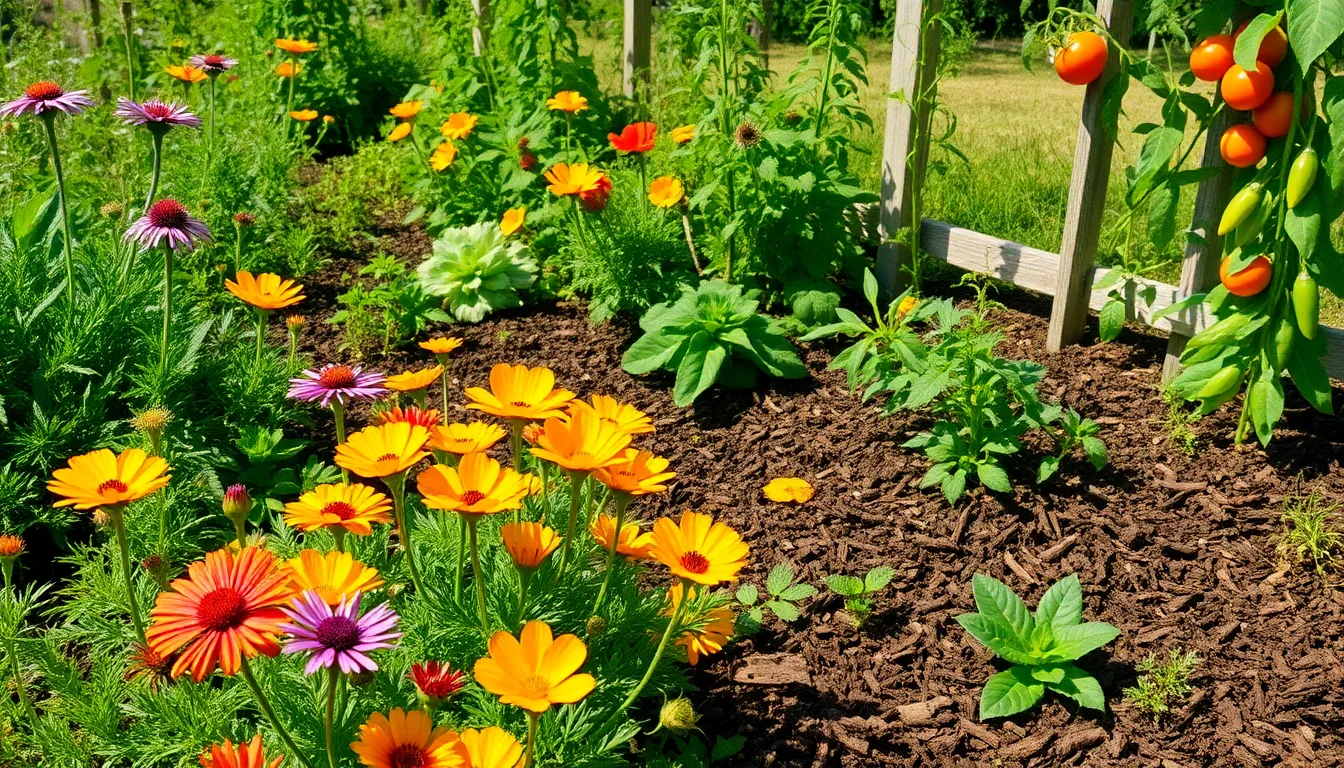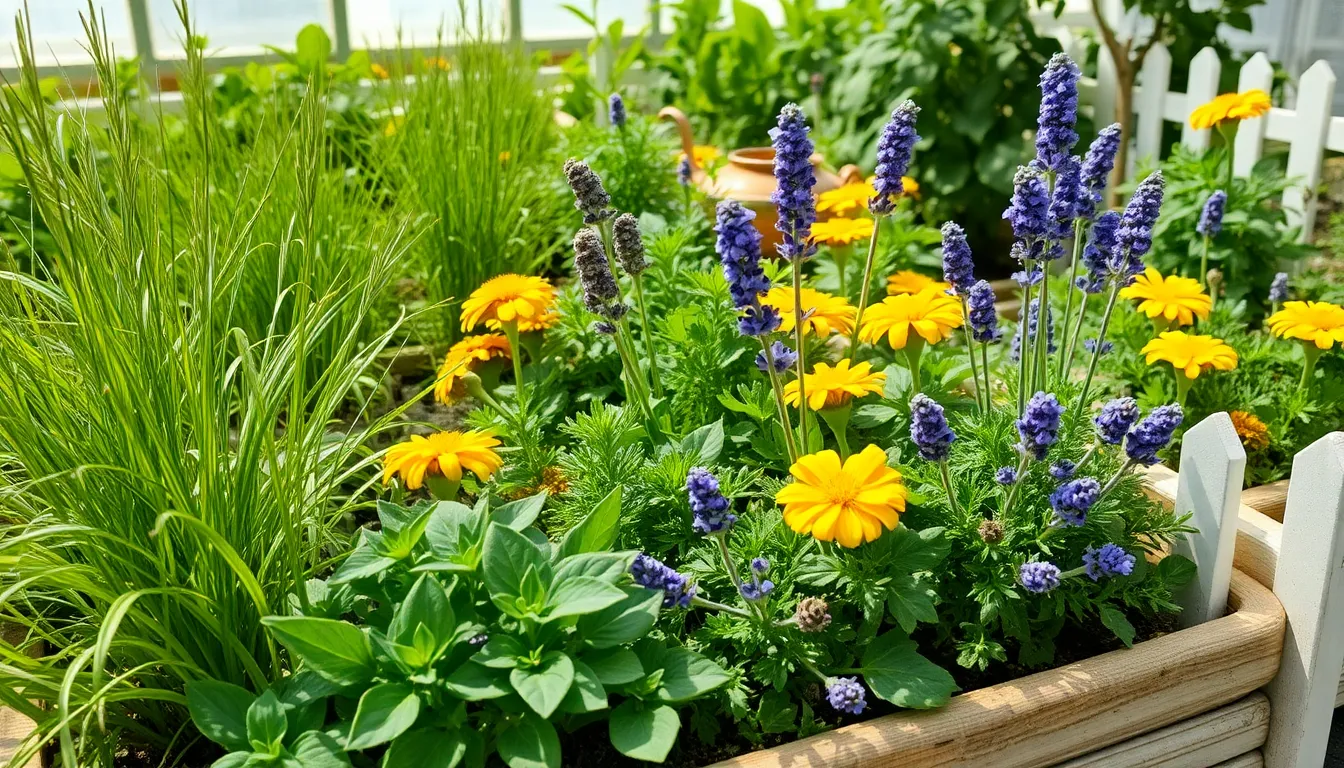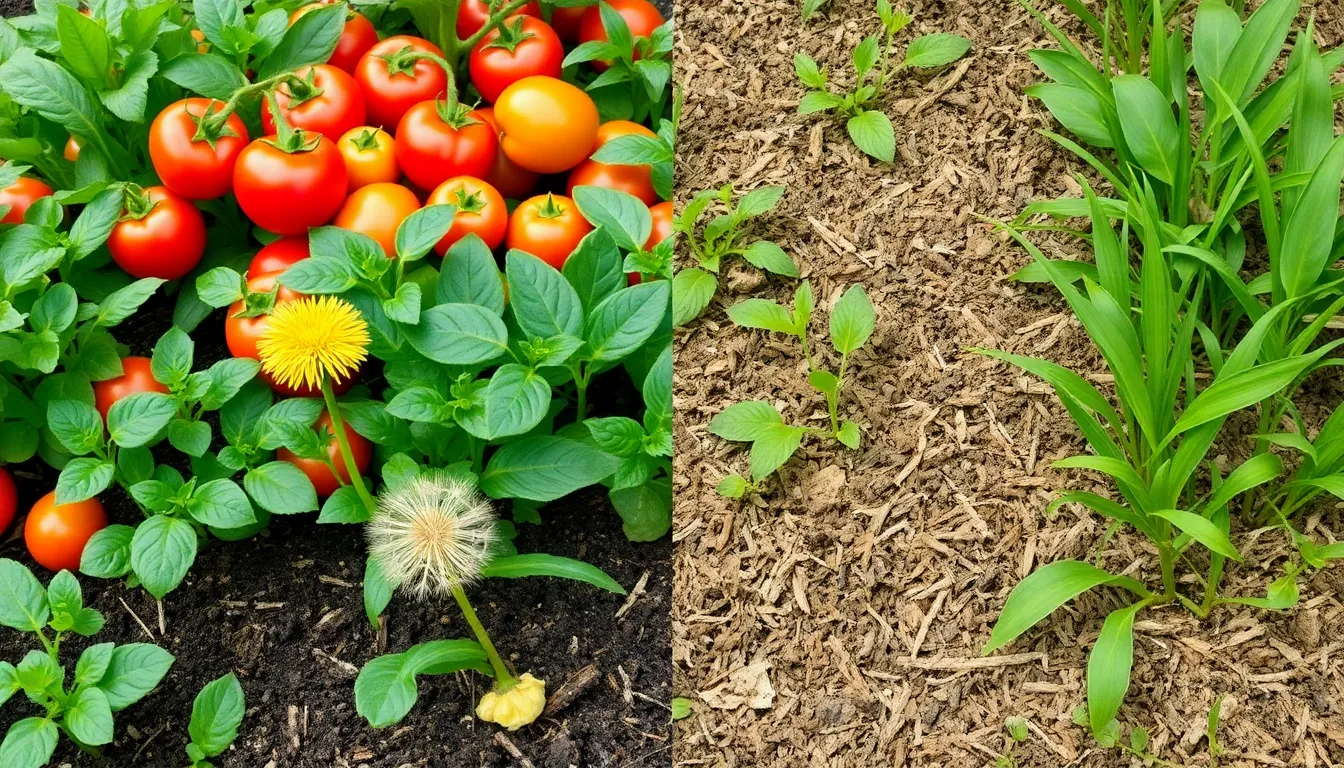In the vibrant tapestry of any thriving garden, weeds can emerge as unwelcome guests, challenging both the novice and seasoned gardener alike. Yet, the solution doesn’t have to be harsh chemicals—embracing natural weed control methods can be both effective and environmentally friendly, nurturing the health of your plants and the ecosystem. As you embark on or continue your gardening journey, understanding the importance of controlling weeds naturally can transform your outdoor space into a more sustainable haven.
For beginners, natural weed control offers a gentler introduction to plant maintenance, ensuring that you cultivate both your gardening skills and your plants without the need for potentially harmful substances. Experienced gardeners will appreciate the nuanced benefits of these methods, which not only protect the earth but also enhance the vitality of their beloved green spaces. Whether you’re just starting to sow seeds or have a garden brimming with blooms, learning to manage weeds naturally empowers you to garden with confidence and care.
In this article, you’ll discover a variety of techniques and tips that make natural weed control both practical and rewarding. From mulching secrets to strategic planting, these insights will help you maintain a flourishing garden without compromising its natural beauty. Dive in to explore how adopting these methods can lead to a healthier, more harmonious garden that reflects your commitment to sustainable practices.
Benefits of Natural Weed Control

One of the major benefits of natural weed control is its positive impact on the environment. By avoiding chemical herbicides, you help maintain the health of your soil and surrounding ecosystems, which in turn supports beneficial insects and microorganisms.
Another advantage of using natural methods is that they often improve soil quality over time. Techniques like mulching not only suppress weeds but also retain moisture and add organic matter to the soil, making it more fertile for your plants.
Natural weed control can also be more cost-effective in the long run. While initial setup might require effort, using materials like straw or wood chips as mulch can be significantly cheaper than chemical treatments over the growing season.
For those looking to enhance their garden’s health, consider incorporating cover crops. These plants, such as clover or rye, can outcompete weeds for nutrients and light, while also enriching the soil with nitrogen when tilled back into the ground.
Here are a few practical tips for implementing natural weed control:
- Mulching: Apply a 2-3 inch layer of organic mulch around your plants to prevent sunlight from reaching weed seeds, thus inhibiting their growth.
- Hand Weeding: Regularly check your garden beds and remove weeds by hand, ideally before they set seeds, to keep them from spreading.
- Proper Spacing: Plant your crops closer together to naturally shade the ground, minimizing the space available for weeds to grow.
Understanding Weed Growth Patterns
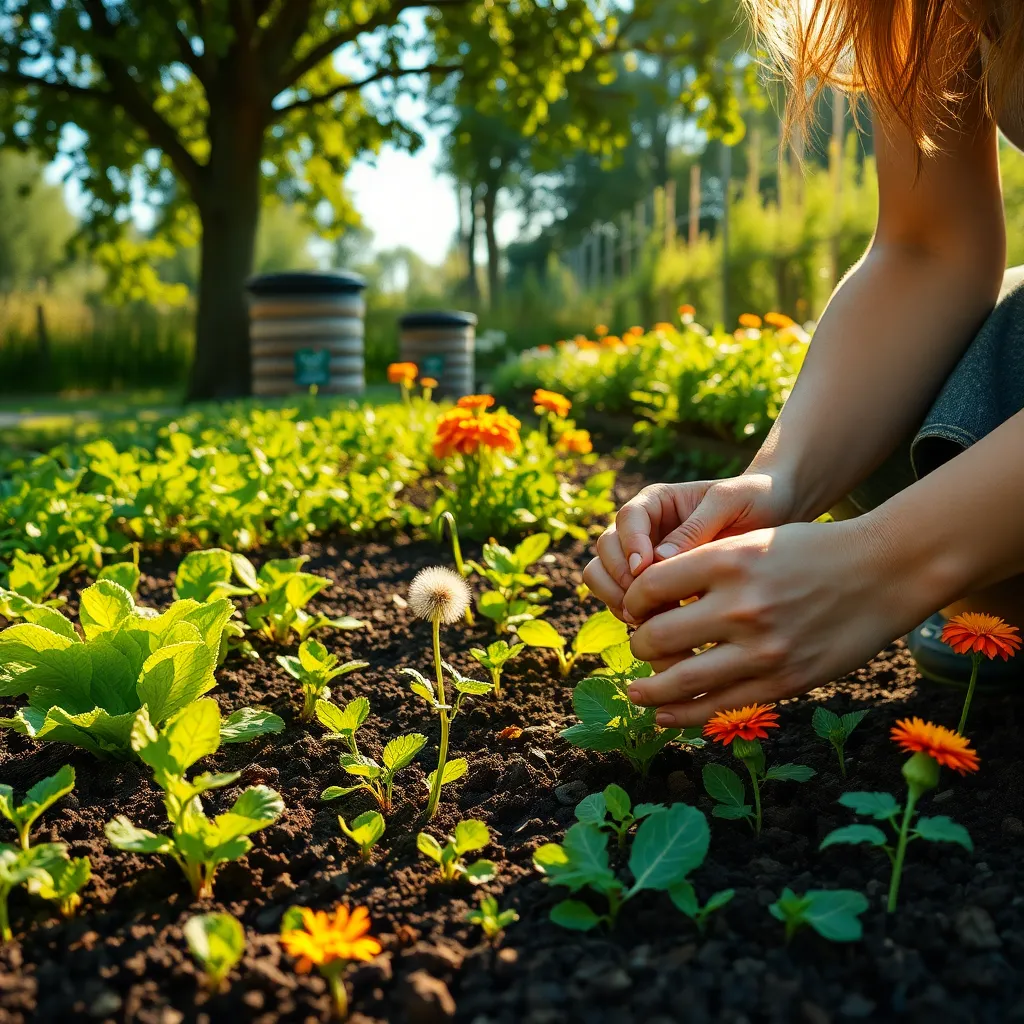
Understanding weed growth patterns is essential for effective natural weed control. Weeds thrive in specific conditions, often exploiting weak spots in your garden’s management.
Timing is crucial when it comes to managing weeds naturally. Most weeds have predictable growth cycles, sprouting vigorously in spring and late summer.
Knowing the lifecycle of common weeds can help you target them more effectively. For example, annual weeds like chickweed can be disrupted by mulching in early spring before seeds germinate.
Perennial weeds such as dandelions require a different approach due to their deep roots. Regular hand-pulling or cutting can deplete their energy reserves, gradually weakening them over time.
For advanced gardeners, integrating cover crops can suppress weed growth by outcompeting them for resources. Choose cover crops like clover or rye, which are effective at both enriching the soil and blocking sunlight from reaching weed seeds.
Additionally, maintaining healthy soil is a proactive strategy against weeds. Amend your soil with organic matter to improve its structure and nutrient content, reducing the likelihood of weed infestation.
Effective Organic Weed Strategies

One effective organic weed control strategy is using mulch to suppress weed growth. Organic mulches like straw, wood chips, or bark not only prevent weeds but also help retain soil moisture and improve soil health as they decompose.
Another natural method is the use of landscape fabric, which acts as a physical barrier to weeds. When applied correctly, this fabric allows water and nutrients to penetrate while blocking sunlight that weeds need to grow.
Consider practicing crop rotation and companion planting to outcompete weeds naturally. By alternating the plants grown in certain areas and using weed-suppressing companions like marigolds, you can reduce the need for additional weed control measures.
For more stubborn weed issues, a homemade vinegar solution can be an effective spot treatment. Mix white vinegar with a small amount of dish soap and apply directly to the leaves of unwanted plants on a sunny day for best results.
Hand-pulling is a simple yet effective method, especially for young weeds. Make sure to remove the entire root system to prevent regrowth, ideally after rain when the soil is moist and roots are easier to extract.
Tools for Natural Weed Management

Embracing natural weed management tools can transform your garden with minimal environmental impact. For instance, a sharp hoe is a gardener’s best friend when it comes to manually uprooting unwanted plants, especially in tight spaces between crops where precision is key.
Mulching plays a significant role in natural weed control, acting as a barrier that restricts sunlight and suppresses weed growth. Use organic materials like straw, wood chips, or dried leaves to create a thick layer around your plants, ensuring the mulch is at least two inches deep to be effective.
Regular hand weeding remains one of the most effective methods for controlling weeds naturally, especially in small garden plots. Ensure you remove the entire root to prevent regrowth and time your weeding sessions after a light rain when the soil is soft.
For those dealing with more stubborn weeds, consider using a flame weeder, which uses intense heat to kill weeds without disturbing the soil. This tool is particularly useful in gravel paths or between paving stones, where traditional methods might be less effective.
Long-Term Weed Prevention Tips
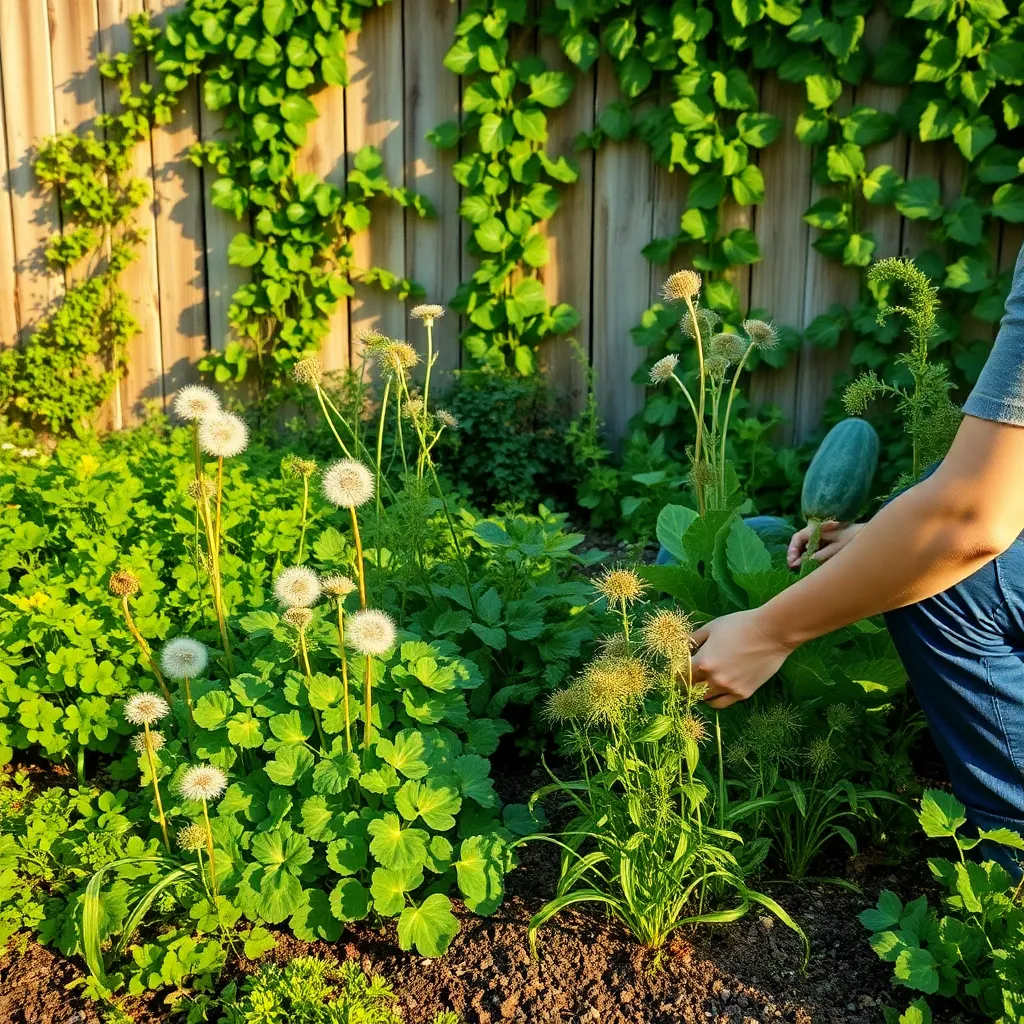
To achieve long-term weed prevention, start by understanding the importance of soil health. Healthy soil can naturally suppress weeds, so focus on maintaining a rich, well-aerated soil structure by adding organic matter like compost annually.
Another effective strategy is to use mulch extensively throughout your garden beds. Mulching not only retains moisture and regulates temperature but also acts as a barrier, preventing sunlight from reaching weed seeds and inhibiting their growth.
For beginners looking to prevent weeds naturally, consider planting ground covers such as clover or creeping thyme. These plants spread quickly and densely, crowding out weeds while adding beauty and diversity to your garden.
Advanced gardeners might try incorporating a no-till approach to their gardening routine. By minimizing soil disturbance, you reduce the chances of bringing dormant weed seeds to the surface, where they can germinate.
Regular maintenance is key to long-term weed control. Make it a habit to inspect your garden weekly and remove any weeds before they have a chance to seed, using a hand trowel or hoe for best results.
For lawns, maintaining a dense grass cover is crucial. Overseed your lawn in the fall to thicken the turf, which can naturally outcompete and suppress weed growth.
Finally, consider the use of organic pre-emergent herbicides, which can be particularly beneficial in preventing weed seeds from germinating. Corn gluten meal is a popular natural option and can be applied early in the growing season for best results.
Conclusion: Growing Success with These Plants
In conclusion, nurturing a healthy relationship is much like tending to a garden—both require natural care, patience, and attention. We explored five fundamental concepts: the importance of open communication, the value of trust, the role of empathy, the power of quality time, and the necessity of mutual respect. Each of these elements acts like a natural remedy, helping to control the “weeds” that can hinder your relationship’s growth. As an actionable step, choose one area to focus on today—perhaps setting aside time for meaningful conversation or expressing appreciation.
To continue fostering a flourishing relationship, save or bookmark this article for future reference. By doing so, you’ll have a ready resource to revisit and reinforce these principles whenever you face challenges. Remember, healthy relationships don’t happen by accident; they require intention and effort. With these tools at your disposal, you are well-equipped to cultivate a partnership that thrives. Here’s to a future filled with love, understanding, and mutual support!

